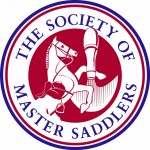Posted: 26th February 2016 | Back to news feed

Today endurance riding is an increasingly popular sport, which involves controlled long distance riding. The rides can vary in distance and can be over 150km long. A horse must be very fit in order to compete and is required to pass a number of vet checks at the start, en route and afterwards.
Well-fitting tack is essential for endurance riding, to ensure the horse stays as comfortable as possible and returns with a soft and supple back even after a very long ride. Here we take a closer look at endurance saddles and the features required to optimise performance of both horse and rider.
The saddle should be based on a well-made and robust tree; in some designs this can be altered to exactly suit the individual horse. Endurance saddles come in various styles and the individual rider should choose the one that is right for them. Some look more like western saddles whilst others are more multi-purpose and can be used for other disciplines such as dressage.
Saddle flaps should be shaped to suit the rider and their position, but should also allow the horse freedom of movement. Many endurance saddles have a knee block placed on the outside of the saddle flap to give the rider extra support whilst not causing restriction.
As many different types of horses compete in endurance, there are various styles of saddle available on the market which cater for all shapes and size. An endurance saddle should be fitted with several rings in order to clip items such as a drinks bottle to and anything else that may be required on the ride.
Some riders prefer the close contact feel which is provided by a monoflap and this is available in some saddle designs.
Information about the Society of Master Saddlers can be found on the website: www.mastersaddlers.co.uk or telephone 01449 711642.

The Equestrian Index newsfeed is compiled from articles submitted by advertising members and expresses the opinions of those members. Watsons Directories Ltd shall not be held liable for any inaccuracies or mis-statements therein.
